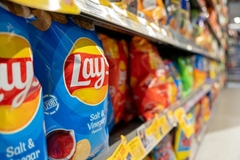Lancet series links ultra-processed foods to harm across “nearly every organ system”
Key takeaways
- Lancet review links UPFs to widespread chronic disease, arguing harms stem from additives, disrupted food structures, and displacement of healthier foods.
- Definition battle heats up as US agencies draft the first federal UPF definition, raising major regulatory and litigation stakes.
- Policy pressure grows, with proposals for taxes and warning labels, California’s school meal ban, and industry pushback against NOVA.
A three-paper series published in The Lancet links ultra-processed foods (UPF) to chronic disease across nearly every major organ system, presenting what researchers describe as extensive evidence that diets high in these products displace healthier eating patterns and drive poor health outcomes globally.
The series, published November 18–19, calls for urgent policy action to halt and reverse rising UPF consumption, while US regulators work separately to establish the country’s first uniform federal definition of ultra-processed foods.
The research assessed more than 100 papers and found links between UPF consumption and conditions including type 2 diabetes, cardiovascular disease, chronic kidney disease, Crohn’s disease, depression, and all-cause mortality.
Carlos Monteiro, professor of public health nutrition at the University of São Paulo, Brazil, who authored the first paper with colleagues, says the evidence strongly suggests that humans are not biologically adapted to consuming UPFs.
The studies argue that increased UPF uptake causes diet quality deterioration not just because these foods are commonly high in fat, salt, and sugar, but also because they are hyperpalatable, low in health-protective phytochemicals, made with processing that disrupts food matrices, and energy-dense.

Definition debate intensifies
The series defines UPFs under the NOVA classification system developed by Monteiro and colleagues in Brazil in 2009 as industrially formulated products that use substances such as hydrogenated oils, protein isolates, and sweeteners, along with cosmetic additives like dyes, emulsifiers, and artificial flavors. However, this definition remains contentious.
 The research reviewed over 100 studies linking UPFs to diabetes, heart and kidney disease, Crohn’s, depression and higher mortality.The Lancet editorial acknowledges that critics argue that grouping foods with nutritional value, including fortified breakfast cereals and flavored yogurts with reconstituted meats or sugary drinks, is unhelpful.
The research reviewed over 100 studies linking UPFs to diabetes, heart and kidney disease, Crohn’s, depression and higher mortality.The Lancet editorial acknowledges that critics argue that grouping foods with nutritional value, including fortified breakfast cereals and flavored yogurts with reconstituted meats or sugary drinks, is unhelpful.
The research directly addresses claims that NOVA confuses correlation with causation, stating that factors beyond nutrient content are at play, including low phytochemicals, high energy density, and disrupted food structures.
Seeking uniform standards
The publication arrives as US federal agencies work to establish the country’s first official UPF definition. The US FDA and USDA issued a Request for Information (RFI) in July seeking data to develop a uniform definition, noting there is no single, universally accepted definition, and classification varies considerably between systems.
HHS Secretary Robert F. Kennedy Jr. says ultra-processed foods are driving the country’s chronic disease epidemic. The agencies estimate approximately 70% of packaged products in the US food supply are foods often considered ultra-processed, with children reportedly getting over 60% of their calories from such foods. The comment period for the RFI was extended to October 23.
Targeting corporate power
The second paper proposes government policies to halt and reverse UPF rise worldwide. One bold element is pushing to treat colors, flavors and non-sugar sweeteners as markers of “ultra-processedness,” which could lead to warning labels, taxes or restrictions in public institutions for bakery and snacks categories.
The series states equity must be central, as UPF consumption is higher among people facing economic hardship. Transforming food systems would require redirecting agricultural subsidies away from large transnational corporations, with UPF taxation potentially funding cash transfers for whole foods to protect low-income households.
The third paper examines corporate power, finding that in 45 global food-system multi-stakeholder initiatives with UPF corporations on boards, almost half of all seats were held by industry executives or closely allied business interests.
Regulatory landscape and litigation risks
A federal UPF definition could have wide-reaching consequences from food formulation and labels to public policy, though it could potentially preempt the patchwork of state laws, which may benefit industry. An RFI is typically an initial step in a multi-year rulemaking process — the FDA’s effort to update its “healthy” regulation took eight years from RFI to final rule.
 The second paper pushes to treat colors, flavors and sweeteners as UPF markers that could lead to warning labels or taxes.The processed food industry also faces litigation risk, with the plaintiff’s bar seizing on increased awareness and scientific research as the basis for class action lawsuits.
The second paper pushes to treat colors, flavors and sweeteners as UPF markers that could lead to warning labels or taxes.The processed food industry also faces litigation risk, with the plaintiff’s bar seizing on increased awareness and scientific research as the basis for class action lawsuits.
Industry may face personal injury claims associated with alleged increased risk of diabetes and obesity as a result of failure to warn consumers — risks that will increase with a formal definition. The Lancet series represents a significant escalation in scientific consensus on UPF health risks.
Industry response and state action
The Institute of Food Technologists (IFT) this year called for science-based definitions focused on nutritional quality rather than processing degree. “Without a clear, science-based framework, the conversation risks oversimplifying a complex issue and stigmatizing safe, nutrient-dense foods that play an essential role in healthy diets,” said Anna Rosales, VP of science and policy at IFT.
IFT states that existing systems broadly categorize foods by processing intensity without considering nutritional composition, leading to misclassification of nutrient-dense foods, such as whole-grain bread and yogurt as “ultra-processed.” The organization recommends that processing methods should not be definitive markers for labeling something as a UPF.
Major food companies, including Nestlé, PepsiCo, Unilever, Coca-Cola, and Danone, have largely opted for silence following the publication, allowing industry bodies like FoodDrinkEurope to defend the sector with arguments that not all UPFs are harmful, the NOVA system is flawed, and industry is already reformulating.
California also introduced a law to eliminate UPFs from public school meals — the first US state to enact such measures — requiring schools to begin phasing out UPFs by July 2029, with a complete ban by July 2035.












